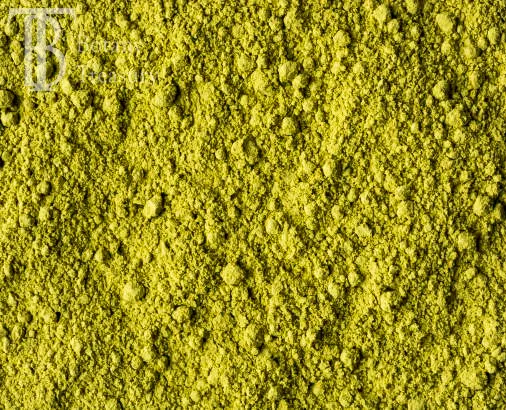
Henna
Henna, scientifically known as Lawsonia inermis, is a flowering plant native to the Middle East and South Asia. For thousands of years, henna has been used for various purposes, including as a natural dye, a medicinal herb, and a symbol of cultural significance. The plant’s leaves contain a pigment called lawsone, which is responsible for its distinctive reddish-brown color and its ability to stain hair, skin and fabric. Henna has been used in various forms, such as a paste, powder, or oil, and has been incorporated into various practices, including body art, traditional medicine, and spiritual rituals.
The active ingredients of henna include:
- Lawsone (2-hydroxy-1,4-naphthoquinone): This is the major active ingredient of henna, responsible for its dyeing properties and the typical orange-red coloration.
- Geniposide and Genipin: These bioactive compounds are found in jagua, a natural dye used for temporary tattoos, and have been suggested to be potential new allergens.
- Mineral Content: Henna powder contains various minerals such as plagioclase, oligoclase, anorthoclase, sanidine, and orthoclase, which are rich in minerals and contribute to its cosmetic and medicinal properties.
- Silica and Calcium: These minerals are found in some henna paste samples and are likely quartz and calcium oxalate grains, respectively.
- Iron and Titanium: These transition metals are present in some henna samples and are likely incorporated into iron oxide phases.
- Silver Nitrate, Carmine, Orange Dye, Chromium, and Pyrogallol: These additives are sometimes found in pre-mixed body dye pastes and can cause inflammatory or late-onset allergic reactions.
These active ingredients contribute to the various uses of henna, including its traditional body decoration, hair dye, and medicinal applications.
Here are some of the key medicinal uses and benefits of henna:
- Cooling Effect: Henna is known for its natural cooling effect, which can provide relief from heat-related headaches and soothe burns and eczema. This property is often used to create a “cooling plaster” by applying henna leaves soaked in vinegar to the forehead.
- Antimicrobial Properties: Henna has antimicrobial properties, making it effective against various skin infections such as fungal and bacterial infections, including ringworm. The plant’s extracts have been found to have antimicrobial efficacy against bacteria responsible for common skin infections, similar to some antibiotics.
- Skin and Hair Care: Henna is used as a natural treatment for various skin conditions, including open wounds, burns, and eczema. It is also used to promote healthy hair by sealing the hair cuticle, preventing breaking, and increasing shine and appearance.
- Fever Reduction: Henna leaves can be used to draw out fever by rolling them into a ball with water and placing it in the hand.
- Gum Health: Chewing on henna leaves is believed to reduce the risk of gum disease and treat mouth ulcers.
- Psychological Benefits: The essential oil derived from henna, is believed to reduce anger and irritability while promoting psychic abilities and clairvoyancy.
- Natural Hair Dye: Henna is used as a natural hair dye, particularly for its antifungal and antimicrobial properties, which can help with premature graying and dandruff.
- Traditional Medicine: Henna has been used in traditional medicine for various ailments, including diarrhea, and enlarged spleen.
Overall, henna has been used extensively in traditional medicine for its cooling, antimicrobial, and antifungal properties, making it a versatile and natural remedy for various health issues.
Botany Treasury is a leading exporter of high-quality henna. If you are interested in purchasing our henna, please don’t hesitate to get in touch with us. Our henna is sourced from the finest farms and undergoes a meticulous processing and quality control process to ensure consistent quality and color. We take pride in delivering exceptional henna to customers around the world.
Synonyms for Henna
- Arabic: al-ḥinnā’ (al-henna).
- Classical Arabic: ina or hina, borrowed from the Arabic al-ḥinnā’ and the word mkokowa, referring to the red mangrove.
- Amharic: hinna and ensosella, referring to Impatiens tinctoria.
- Egyptian: ‘nḥ-imi or ankh-imy, which might be translated as the ‘Life-is-in-it’-plant.
- Other Names: Coppery, Russet, Chestnut, Ginger, Titian, Tawny, Copper, Hennaed, Nutbrown, and Rufescent.
